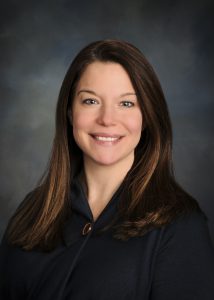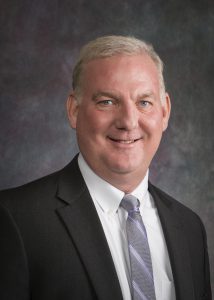By Hayden Seder

St. Luke’s hospital network began a journey three years ago to change the way it handles patient care. The problems of unaffordable healthcare, lack of communication between healthcare providers and access to good healthcare, resulted in St. Luke’s long-term plan. Strategy 2020 was created to lower the cost of care while simultaneously improving the quality.
The new plan, expected to be implemented by 2020, will be completely patient-centered, whether in hospitals and clinics or at home, and will increase communication with the patient as well as among all of an individual’s healthcare providers. It is designed to ensure that a patient’s care team stays connected and up-to-date on that patient’s care.
“Our strategy is rooted in recognizing that the cost of healthcare and the rate it’s rising is unsustainable,” said Mike Fenello, previously the site administrator of St. Luke’s Magic Valley but now the vice president of population health under the new Strategy 2020.
“We feel like the government is not going to be able to solve that problem,” Fenello said. “The strategy has been to transform our business model so that it enables the transformation of our clinical model.”
One of the ways the business model will change with Strategy 2020 is the payment mechanism; once a pay-for-service structure, St. Luke’s will switch to a pay-for-value system where St. Luke’s receives a lump sum (through insurance providers or Medicare) and then is accountable for the quality of care for that individual as well as the total cost of care.

To better understand, Fenello provided an example of a patient described to him by a colleague at another health system.
A woman came in and was hospitalized and diagnosed with diabetes. For the next year, this woman ended up coming back to the hospital about twice a week. After a year, the hospital staff finally figured out that when she was sent home the first time, she got the insulin, but it said on the box to keep refrigerated. She didn’t have a refrigerator so she never bothered to get the medication again.
Strategy 2020 hopes to ensure that there is enough communication with the patient and the potential for home visits and care that this kind of example never happens again.
“We want to stay connected with patients in a way that we would know she didn’t have a fridge,” said Fenello. “If we got the lump sum, we can choose what to do with that money and if that means diverting money to keep that patient healthy at home and buying her a fridge, that’s what we’ll do.”
More important than using that lump sum to, as in this instance, buy someone a refrigerator, is the ability to stay connected to a patient daily.
In the last few years, since the start of Strategy 2020, several pilot programs were tested, including a remote patient monitoring system where caretakers can help patients stay home while regulating and managing their complex medical problems.
Patients instead are armed at home with a kit, including an iPad, a scale, blood pressure cuff, and other tools that allow for monitoring blood sugar and heart rate. The information is conveyed back to a group of nurses whose job it is to stay connected with their patients in their home setting.
If something like a high blood pressure reading goes off, the nurses will detect that and connect with the patient and, if need be, go to that patient’s home.
By identifying problems before they get out of hand, this type of program can lower costs for patients who would usually end up in the emergency department or getting hospitalized, the highest-cost entry points into the healthcare system.
Another part of Strategy 2020 is putting behavioral health team members in St. Luke’s physician clinics.
“Behavioral health problems are one of the most challenging issues to solve but also an underlying issue that drives up the cost of healthcare,” said Fenello.
St. Luke’s has reorganized internally as part of Strategy 2020, particularly at the site level.
Across the eight hospitals in the St. Luke’s system, the role of site administrator was eradicated and replaced by a combined chief operating officer/chief nursing officer. Former chief nursing officer Carmen Jacobsen has taken on that role at St. Luke’s Wood River.
“We felt it was important to have a site leader who lives locally, is connected locally, can focus on the deployment of what we’ve learned and want implemented while also having a clinical background and being an executive leader with an operational background,” said Fenello.
Fenello also had a change in role, going from site administrator of St. Luke’s Magic Valley to sharing the title of vice president of population health with two other people within the St. Luke’s system.
With most of the pilot program work already done, the St. Luke’s system is now working to bring the new programs and methods to scale in an effective way that can be broadly deployed in each of the St. Luke’s communities.
